
Jeff Chajii traveled from El Silencio of Tilarán to Nosara to march in the second annual Nosara Pride procession. He journeyed 171 kilometers (106 miles) to get here, about four hours by car. To him, every mile and every hour serve a purpose: to encourage others in rural communities to do the same.
This is the second year in a row that the Nosara Pride collective has organized a pride march in the community. It’s also the second year that Nosara has been the only community in Guanacaste that has taken to the streets to raise awareness about the sexually diverse population and celebrate their orientations and identities.
This year, those who organized the march wanted to overcome a challenge that they identified last year: to involve more people from Guanacaste, to invite groups from the province and include local symbols such as bombas (traditional rhyming limericks with a punchline) and folkloric dances.
“Although it’s true, the pride is an inclusive event where we want to welcome everyone, it is important to make an impact where we are, in Guanacaste,” commented Roberto Acuña, one of the Nosara Pride organizers.
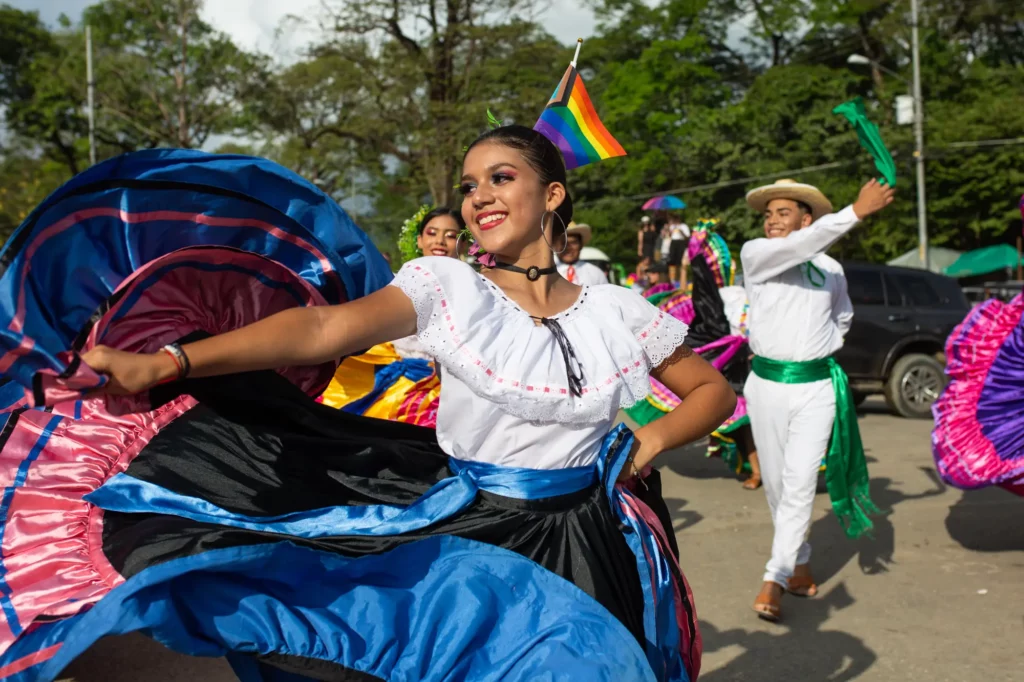
The Kumbala group traveled from Nicoya to perform traditional dancing during the LGBTIQ+ pride march.Photo: César Arroyo Castro
Chajii agrees. When he was ten years old, in secret, Chajii asked God for him to only like women in order to comply with the demands of the church where his parents took him. Now he marches convinced of the importance of showing sexual diversity in the country’s rural communities.
“It’s important to motivate other places in the province to have their marches where more people can attend and where they aren’t limited by not having a way to go. I knew about five people from my canton who wanted to come, but couldn’t,” Chajii said.
***
At 2:30, the march begins. The route starts at Nosara’s sports plaza and moves along to Pelada Beach. Five kilometers (3 miles) in piercing heat.
Despite the organization’s efforts to involve more locals, the group is still made up mostly of foreigners. Of course, all of the people are united by pride. They wave their LGBTIQ+ flags and wear their outfits alluding to diversity, which are intermingled with symbols of Guanacaste.
“BOMBA! Guanacaste belongs to the country by its own free will, and the song of love in freedom lives in its history. Uyuyuy bajura!” states the shirts that Nosara Pride designed for participants.
Chajii goes along amidst the people. He takes short steps as he looks around curiously. His face reflects an expression between shyness, nervousness and the thrill of experiencing a pride march in his province for the first time.
A diversity flag is stuck in his hat and his briefcase is covered by a larger one. Inside the case, he carries more than 600 condoms and 21 lubricants that he brought to distribute free of charge to men and trans people so they can have safer sex.
He brings the condoms as a representative of the Costa Rican Demographic Association, a group dedicated to promoting sexual health and defending the population’s sexual and reproductive rights.
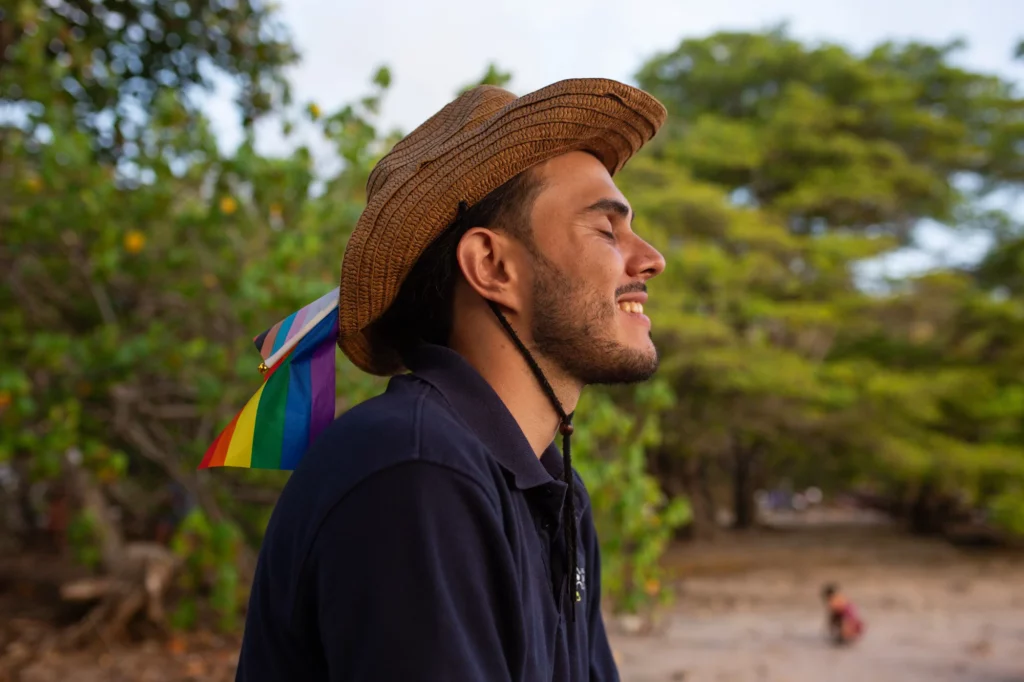
Chajii admits that even though he marches with pride, he’s still afraid of being attacked because of his sexual orientation.Photo: César Arroyo Castro
The organization that he is a part of is one of the groups that joined the march along with Amor a la Diversidad de Tila and the Nicoya Feminist Collective, both groups from Guanacaste.
“Guanacaste is a province where a lot of machismo is experienced, where many men discriminate and people who come here suffer bullying for showing what they feel. Love doesn’t have to be hidden. You are how you are,” says Fiorella Guido, one of the members of the Nicoya Feminist Collective.
°°°
In San José, the other place where a diversity march takes place, the route goes between buildings and stores. In Nosara, people walk dressed up and carry a few signs between houses and buildings.
The slogans are few, but that doesn’t obscure the presence of their songs and voices. The music, the cars honking to show their support and the occasional Guanacastecan shout alert neighbors that something is happening in Nosara.
This year, the pride organizers increased the route by two kilometers (1.2 miles) with the idea that the caravan would go across the center of Nosara and have more impact in the local community.
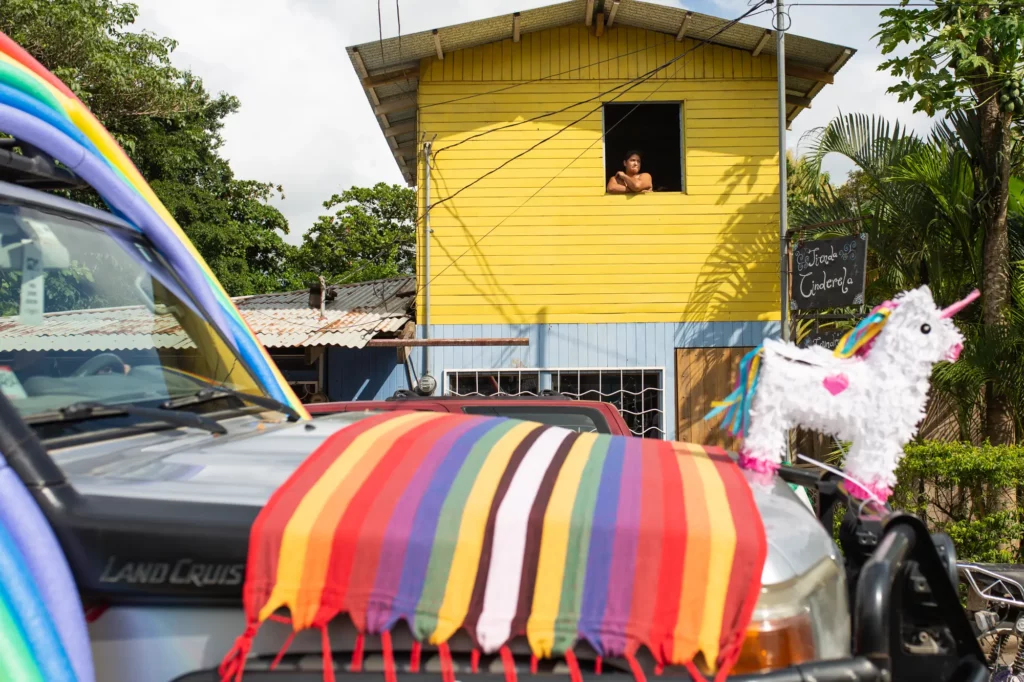
Community residents came out of their homes to watch the march that started at the Nosara soccer field and record it with their cell phones.Photo: César Arroyo Castro
Along the route, curious men and women peek out from their doors or go out in front of their houses to watch the parade and take the opportunity to record it with their cell phones.
To Chajii, walking between the houses allows him to break the taboo that diversity is only seen in the Central Valley and is something foreign to rural communities.
“Families can see that diverse people are in their own community. It’s not something that’s distant from their lives or that they only see on television…. Families in Nosara see us march and that allows us to get closer to the community,” he reflects.
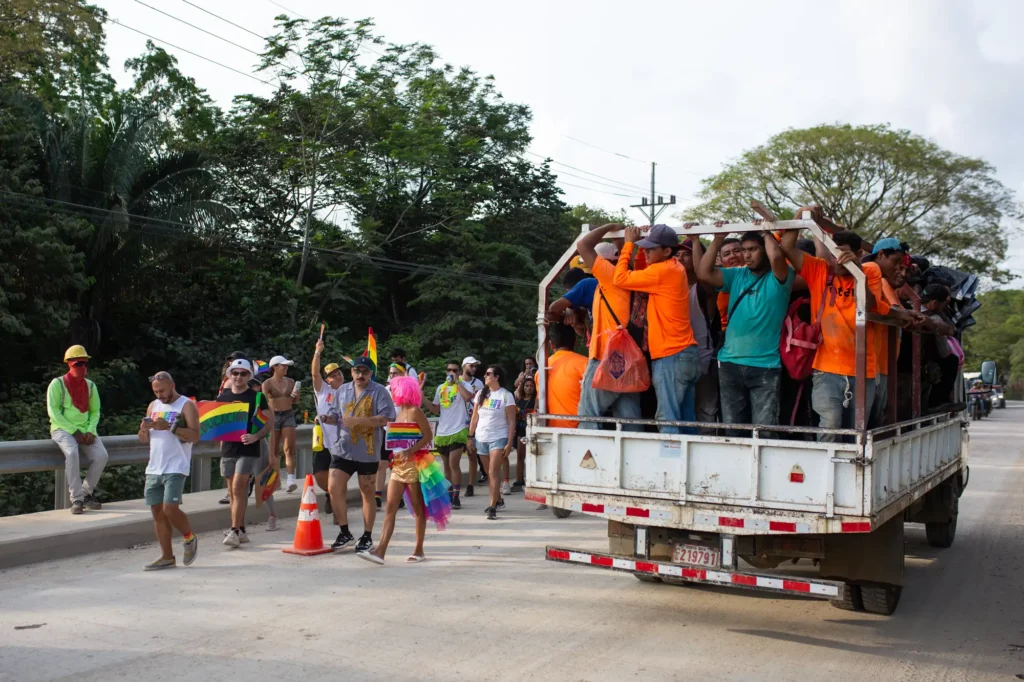
A truck full of construction workers passes the pride march on its way to Playa Pelada.Photo: César Arroyo Castro
The march makes a stop at Rinde Más. There they watch a performance by the Kumbala folkloric dance group and by hip hop group Kumbala Urban Explosion from Nosara.
The parking lot, which is usually full of tuk tuks, was quickly invaded by the traditional costumes of the teenagers of Kumbala. The caravan, along with customers and employees from the establishment, formed a half circle and recorded the cultural activities with their cell phones.
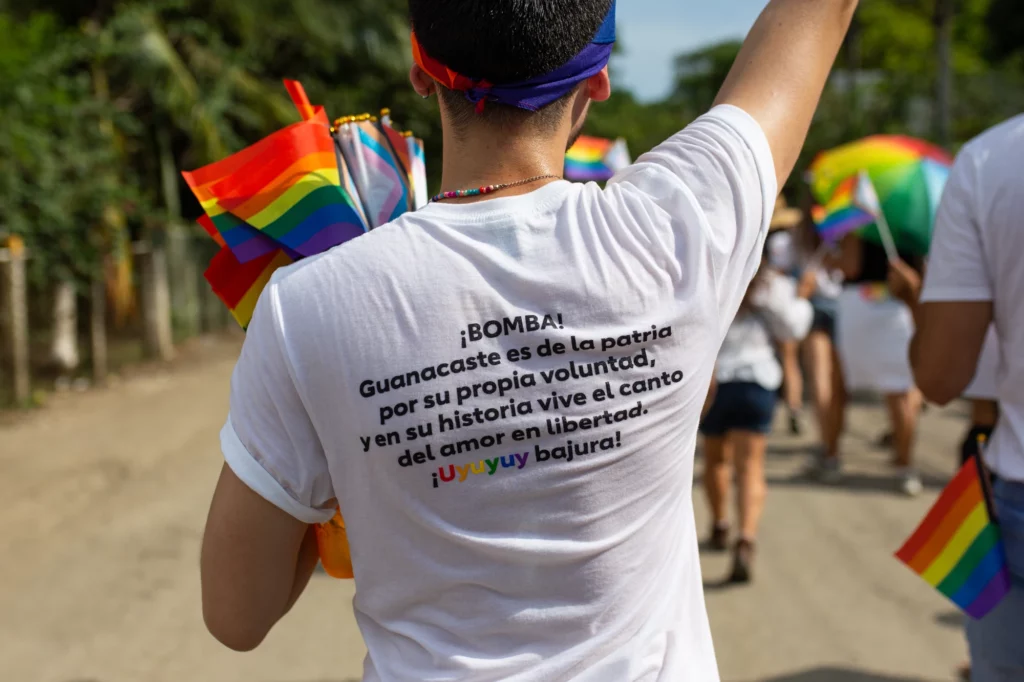
La organización del Nosara Pride 2023 decidió incluir en las camisetas oficiales una bomba guanacasteca como una forma de incluir más la cultura local dentro de la celebración.Photo: César Arroyo Castro
Kumbala is here because the municipality sponsored the bus that brought them, but no representatives from the local government attended.
“[Kumbala’s participation] was sent to the municipal council and the council approved the [group’s] participation…. We would love a little more political participation, but we’re aware that these changes are step by step,” Acuña said.
When the folkloric group’s performance ended, drag queen Monserrath Graham, who came from Tamarindo, made an opening between the dancers, waving the wings of her Morpho butterfly costume. Graham’s show made more than one person sing.
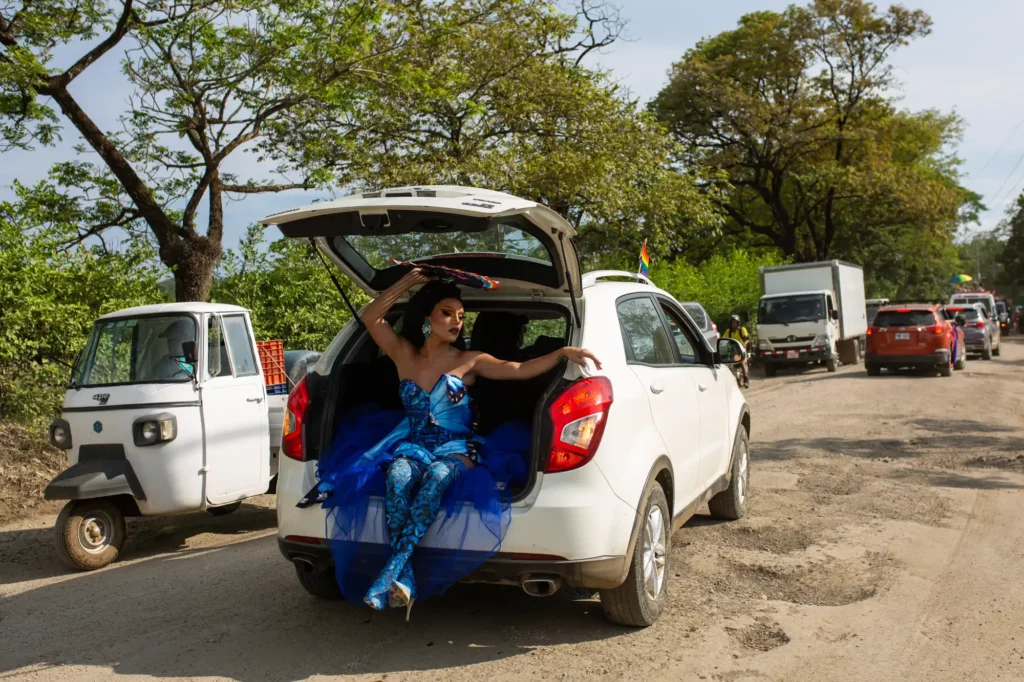
Drag performer Monserrath Graham joined the caravan to present a show during the pride march. In front of Rinde Más supermarket, she performed songs by Queen, AVA and Gloria Trevi.Photo: César Arroyo Castro
Acuña takes the opportunity to remind people that the organization has Nosara Pride shirts for sale.
“The idea is to create a fund that we can use for the next year’s pride, but also our idea this year, now that there are more of us (members of the Nosara Pride collective), is to have a more diverse schedule during the year: have more talks, more forums, more community,” explains Acuña.
°°°
After five kilometers (3 miles) of walking, the movement ended at Pelada Beach. There, they were welcomed by Olga’s restaurant with a DJ, courtesy shots and garlands alluding to diversity. Some take the opportunity to dance and have a beer while the majority disperse along the beach in their colorful outfits.
“I was very motivated to come from a rural area where it has been very difficult for me to accept and respect myself as a person. I think that if I can raise awareness from where I come from in a march like this, other people can be motivated to feel more secure and accepted,” says Chajii in front of the beach at 5:30 p.m., after almost three hours of showing off the diversity flag through the streets of Nosara.
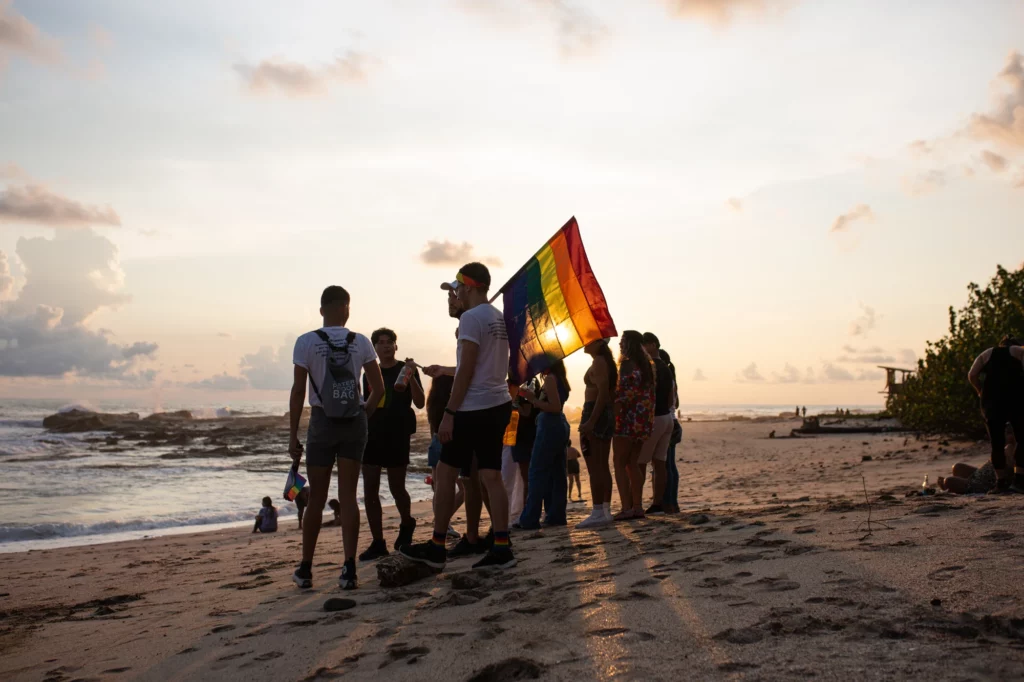
Nosara Pride ended with music at Olga’s restaurant at Pelada Beach, where participants took the opportunity to watch the sunset.Photo: César Arroyo Castro


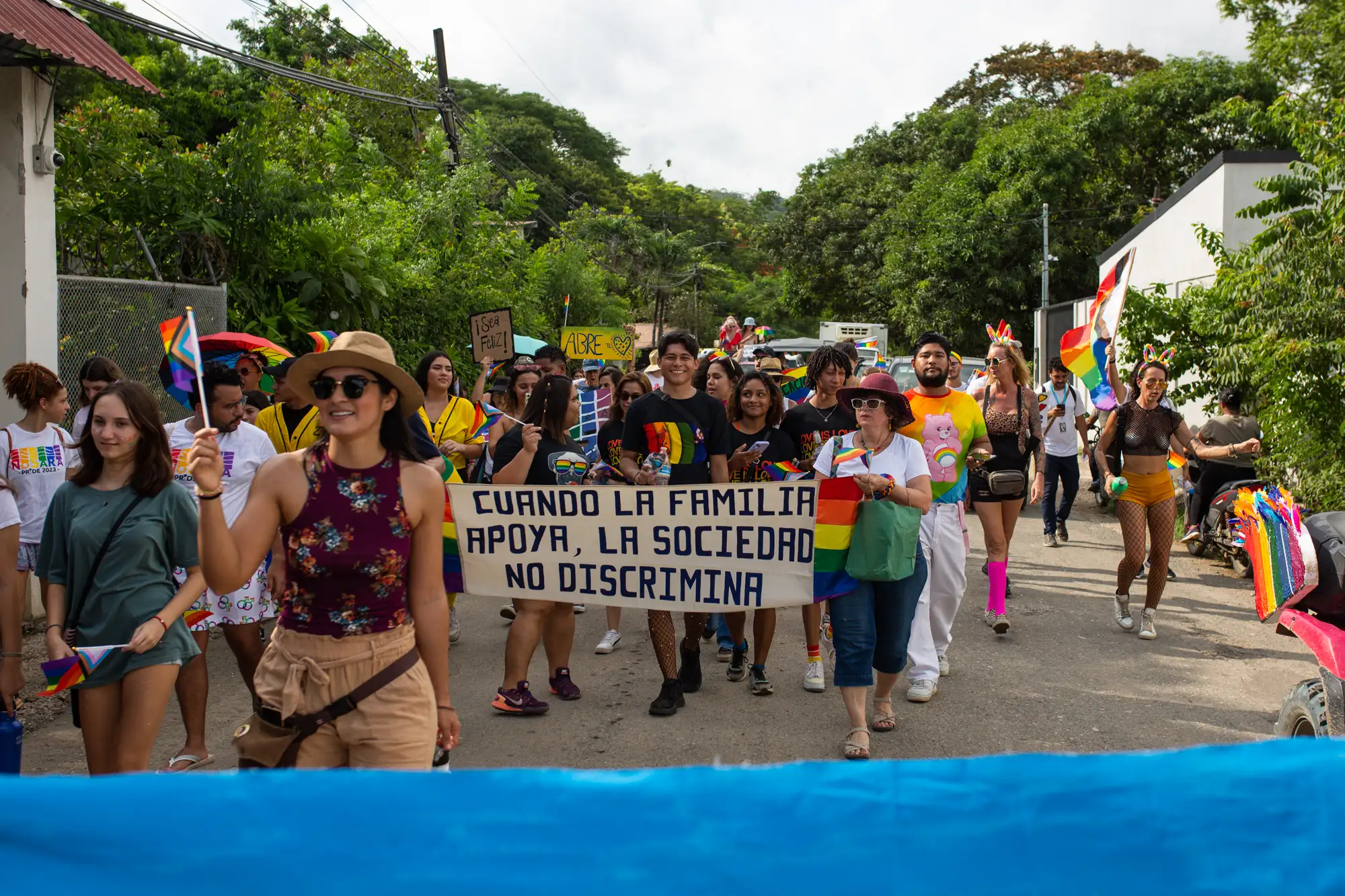
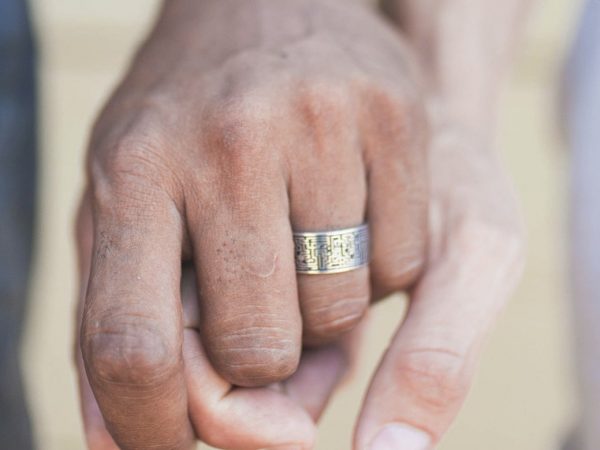
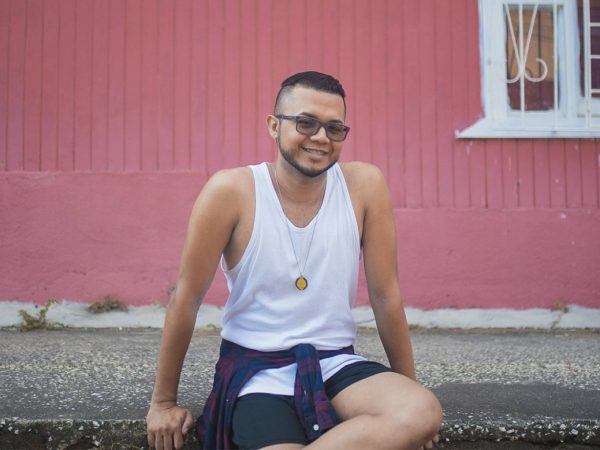
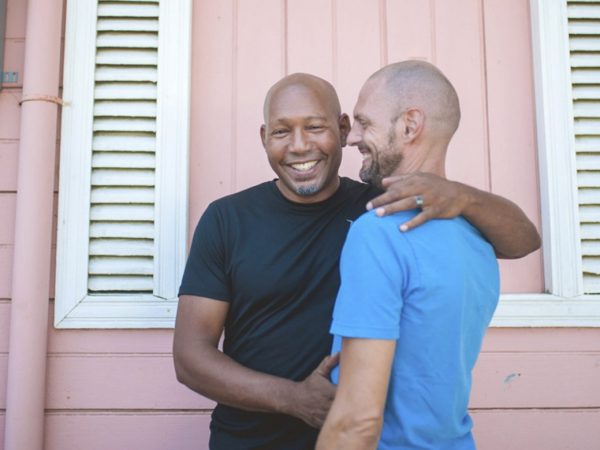

Comments